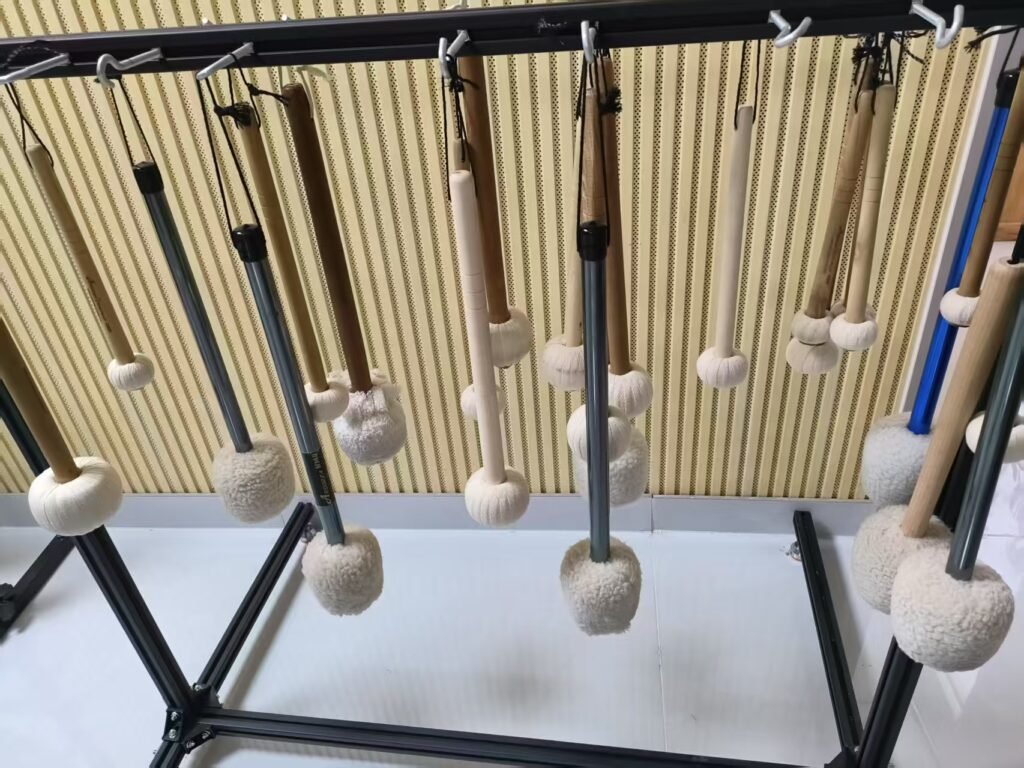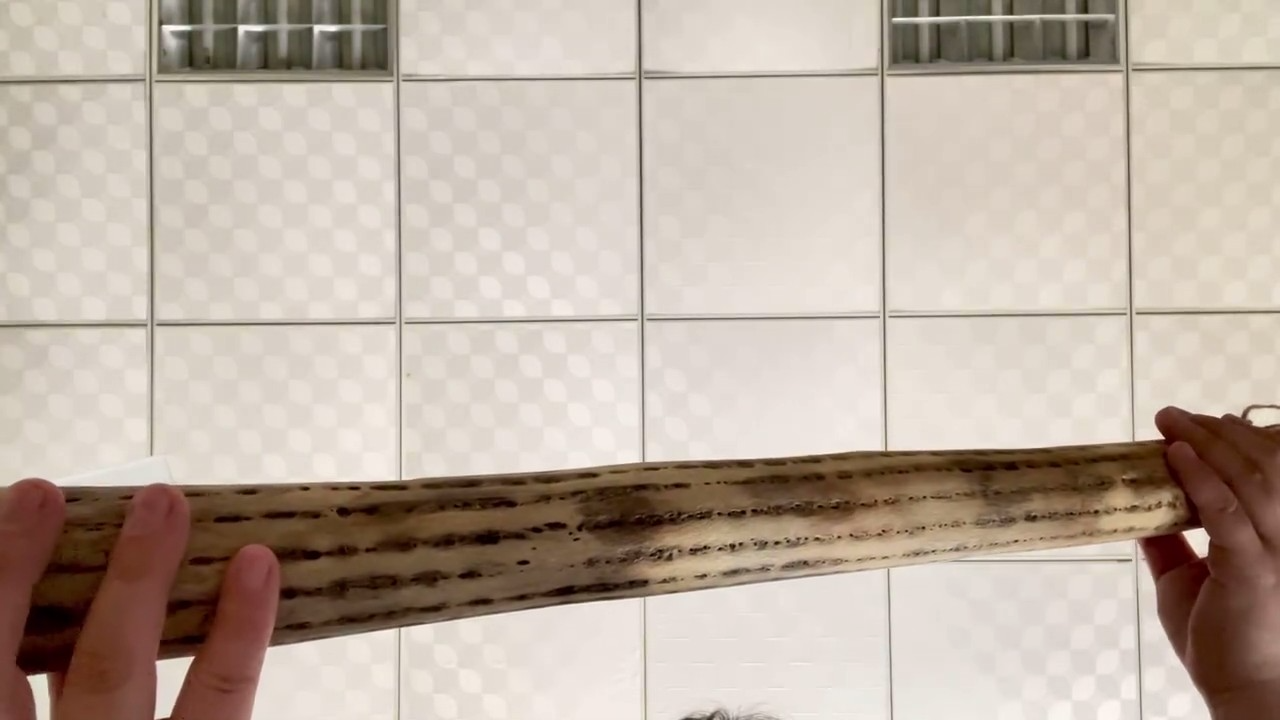The relationship between a singing bowl and its mallet represents one of the most critical yet often overlooked aspects of sound healing practice. While practitioners frequently invest considerable time and resources selecting the perfect bowl, the humble mallet—also known as a striker or puja—receives far less attention despite its profound impact on sound quality, playing technique, and therapeutic effectiveness. This comprehensive guide explores why mallets matter so fundamentally to singing bowl performance and how choosing the right striker can transform your practice from mediocre to masterful.

Understanding the Mallet-Bowl Relationship: The Physics of Sound Production
The interaction between mallet and bowl creates the fundamental physics underlying all singing bowl sound production. This relationship involves complex acoustic principles that directly affect every aspect of the resulting sound, from initial attack characteristics to sustain duration and harmonic development.
Contact Mechanics and Sound Initiation
When a mallet strikes a singing bowl, the initial contact creates a complex chain of mechanical and acoustic events that determine the character of the resulting sound. The duration of this contact—typically lasting only milliseconds—sets in motion vibrations that will continue for many seconds or even minutes. Understanding this crucial moment reveals why mallet selection affects everything that follows in the acoustic experience.
The surface interaction between mallet and bowl involves intricate physics that most practitioners never consciously consider. The size and shape of the contact area between mallet and bowl affects how efficiently striking energy transfers into the bronze, while the brief deformation that occurs in both surfaces during impact influences which frequencies emerge most prominently. A soft mallet creates a larger contact area and longer contact time, spreading the impact energy across a broader section of the bowl while encouraging the development of warm, fundamental frequencies.
Conversely, a hard mallet creates a smaller contact area with shorter contact duration, delivering energy more precisely and often emphasizing higher harmonics and overtones. The rebound characteristics of different mallet materials determine whether energy continues flowing into the bowl throughout the contact period or gets cut off prematurely, significantly affecting both volume and sustain duration.
Energy Transfer Mechanisms
The efficiency of energy transfer from mallet to bowl determines both the volume and quality of the resulting sound through principles that mirror those found throughout acoustic engineering. Optimal energy transfer requires careful impedance matching between mallet and bowl characteristics, much like matching audio components for maximum power transfer.
When mallet mass and hardness align appropriately with bowl size and material properties, kinetic energy from the striking motion converts efficiently into bowl vibration energy. Poor matching can cause significant energy loss, resulting in weak, unclear sounds that require excessive striking force to achieve adequate volume. This inefficiency not only compromises sound quality but also increases fatigue and reduces the subtle control that characterizes masterful playing.
The concept of resonance coupling explains why certain mallet-bowl combinations produce sounds that seem to emerge effortlessly while others require forced, aggressive playing to achieve similar results. Well-matched combinations work together synergistically, with the mallet facilitating rather than fighting the bowl’s natural resonance patterns.
Vibrational Mode Activation
Singing bowls vibrate in complex three-dimensional patterns called vibrational modes, with different mallet characteristics preferentially activating different combinations of these modes. Understanding these relationships allows practitioners to select mallets that emphasize desired acoustic characteristics while minimizing unwanted frequency content.
Soft mallets with large contact areas tend to activate fundamental modes that produce the deep, grounding tones often desired for therapeutic work. The broad energy distribution encourages even activation across the bowl’s surface, promoting harmonic development that feels warm and enveloping rather than sharp or aggressive.
Hard mallets with smaller contact areas can selectively activate higher-order vibrational modes that produce the brilliant harmonics and overtones that add complexity and interest to singing bowl sounds. Skilled practitioners learn to use these tools strategically, employing hard mallets when they want to emphasize clarity and definition while choosing soft mallets for gentleness and warmth.
Mallet Materials and Their Acoustic Properties
The material composition of a mallet fundamentally determines its acoustic characteristics and compatibility with different types of singing bowls. Understanding these material properties enables practitioners to make informed choices that optimize their sound production.
Traditional Leather Wrapping
Leather-wrapped mallets represent the traditional choice for singing bowl playing, offering unique acoustic properties that have made them popular for centuries. The organic nature of leather creates sound production qualities that many practitioners find irreplaceable for certain applications, particularly therapeutic work where warmth and gentleness take priority over precision and power.
Leather’s ability to compress during impact creates longer contact times between mallet and bowl, resulting in gradual energy release that produces the warm tonal character associated with traditional singing bowl playing. This compression also provides natural dampening of high-frequency content, reducing harshness while emphasizing the fundamental frequencies that create grounding, centering effects in listeners.
The variety of leather types available offers practitioners options for fine-tuning their sound characteristics. Suede leather provides the softest possible contact, creating extremely gentle sounds perfect for sensitive therapeutic applications or quiet practice environments. Smooth leather offers slightly firmer contact while maintaining warmth and musicality, making it popular for general practice and group sessions.
Buffalo leather, prized for its thickness and durability, creates substantial padding that produces some of the warmest, most enveloping sounds possible from singing bowls. Deerskin represents the ultimate in gentleness, often used by practitioners working with trauma survivors or in situations requiring the softest possible approach.
Felt-Covered Mallets
Felt mallets offer different acoustic characteristics from leather, providing precision and control that many professional practitioners prefer for advanced techniques and performance applications. The synthetic nature of most modern felt allows for consistent manufacturing that produces predictable, reliable performance characteristics over time.
The clean attack that felt provides creates crisp, defined initial sounds without the softness that sometimes makes leather mallets less suitable for precise musical work. This clarity comes from felt’s ability to deliver striking energy efficiently while maintaining excellent response to varying striking force, giving practitioners exceptional dynamic control.
Felt density variations allow practitioners to fine-tune their sound characteristics within the felt family. Soft felt approaches leather-like warmth while maintaining better precision, making it popular among practitioners who want gentle sounds with more control than traditional leather provides. Medium-density felt offers versatility for various playing styles, while hard felt provides the precision needed for advanced techniques and complex musical passages.
The weather independence of synthetic felt makes it particularly valuable for practitioners who work in varying environmental conditions or need consistent performance regardless of humidity and temperature changes. This reliability proves essential for professional applications where unpredictable mallet behavior could compromise important sessions.
Rubber and Synthetic Materials
Modern synthetic materials have introduced new possibilities for singing bowl mallet design, particularly for specialized techniques like rim playing where traditional materials often prove inadequate. Rubber mallets excel at creating the sustained friction needed for smooth rim playing, offering consistent grip characteristics that allow practitioners to maintain continuous contact while circling the bowl’s edge.
The durability of rubber and other synthetic materials makes them particularly suitable for intensive use situations, such as institutional settings or practitioners who conduct multiple sessions daily. These materials maintain their performance characteristics much longer than organic materials, reducing replacement frequency and long-term costs.
Specialized synthetic materials continue expanding the possibilities for mallet design. Silicone offers exceptional temperature stability for practitioners working in extreme environments, while various composite materials combine multiple advantages in single constructions. Memory foam provides ultra-gentle playing characteristics that surpass even the softest traditional materials.
Wood and Natural Materials
Wooden mallets, while less common for general singing bowl playing, serve specific purposes that make them valuable additions to comprehensive mallet collections. Traditional wooden strikers provide the sharp attack characteristics needed for ceremonial use and rhythmic playing, creating bright, percussive sounds with quick decay that contrast beautifully with the sustained tones of traditional soft mallets.
Different wood types offer varying acoustic characteristics that can be matched to specific bowls and applications. Hardwoods like maple and cherry provide bright, clear tones with excellent projection, while softer woods create gentler impact with warmer characteristics. Bamboo offers unique acoustic properties combined with environmental sustainability, making it popular among environmentally conscious practitioners.
Size and Weight Considerations: Matching Mallets to Bowls
The physical relationship between mallet size and weight relative to the singing bowl significantly affects both sound quality and playing comfort. Understanding these relationships enables practitioners to optimize their equipment combinations for specific applications and preferences.
Size Relationship Principles
The optimal mallet size relative to bowl dimensions follows general principles that ensure efficient energy transfer while maintaining playing comfort and control. As a general guideline, mallet diameter should approximate one-quarter to one-third of bowl diameter, providing adequate contact area for efficient energy transfer without overwhelming smaller bowls or proving inadequate for larger ones.
Small bowls ranging from three to five inches in diameter typically work best with mallets measuring one to one-and-a-half inches in diameter. This proportion ensures that the mallet can adequately activate the bowl’s limited surface area while preventing the overwhelming that larger mallets might cause. The delicate nature of small bowls requires careful energy application, making appropriate mallet sizing crucial for optimal results.
Medium bowls between six and eight inches in diameter accommodate mallets ranging from one-and-a-half to two-and-a-half inches in diameter. This size range provides the versatility that makes medium bowls popular among practitioners, as they work well with various mallet types while offering sufficient surface area for complex playing techniques.
Large bowls measuring nine inches or more in diameter require mallets of two-and-a-half to four inches in diameter to adequately activate their substantial mass. Undersized mallets often fail to provide sufficient energy for full activation of large bowls, resulting in weak, unclear sounds that don’t demonstrate the instrument’s true capabilities.
Weight Distribution and Balance
Mallet weight significantly affects both the character of sounds produced and the physical demands of playing, with heavier mallets providing more powerful impact and lighter mallets offering greater control and reduced fatigue. Understanding these trade-offs helps practitioners select mallets that match their physical capabilities and playing intentions.
Heavy mallets deliver greater momentum during striking, creating stronger initial attacks that can produce more extended sustain and deeper fundamental frequency emphasis. The increased energy transfer often results in more powerful, room-filling sounds that prove valuable for large group sessions or therapeutic work requiring substantial acoustic presence.
However, heavy mallets also limit playing speed and increase fatigue during extended sessions, making them less suitable for rapid techniques or practitioners with limited hand and arm strength. The balance between power and playability requires careful consideration of individual needs and playing styles.
Light mallets enable gentle playing that proves essential for sensitive therapeutic applications while reducing fatigue during long sessions or frequent use. The reduced mass allows for better control over subtle dynamics and facilitates rapid playing techniques that heavier mallets cannot accommodate.
The balance point of a mallet affects how it feels and responds during playing, with weight distribution between head and handle influencing both comfort and control. Mallets balanced closer to the handle provide easier manipulation and reduced fatigue, while those balanced toward the head offer more striking power but require greater effort to control precisely.
Specialized Size Applications
Different applications require specific mallet size characteristics that optimize performance for particular uses. Therapeutic practice often benefits from oversized soft heads that create large contact areas for extremely gentle playing, while professional performance may require compact mallets that provide precise control and reliable consistency.
Educational and group use applications typically favor moderate sizes that accommodate various skill levels and hand sizes while withstanding heavy use by multiple practitioners. The durability requirements of institutional use often take precedence over specialized performance characteristics, leading to different optimal choices than individual practice applications.
Hardness and Density: Fine-Tuning Your Sound
The hardness and density of mallet materials represent critical factors in sound production that allow practitioners to fine-tune their acoustic output for specific applications and personal preferences.
Understanding Material Hardness Effects
Soft mallet materials create distinctive sound characteristics through their ability to compress during impact, extending contact time and creating gradual energy transfer that produces smooth, musical attack characteristics. This longer contact period allows the bowl’s natural resonance to develop more fully while filtering harsh high frequencies that might interfere with therapeutic or meditative applications.
The fundamental frequency emphasis that results from soft mallet use creates grounding, centering effects that prove particularly valuable for therapeutic work. The warm, enveloping qualities of sounds produced by soft mallets often feel comforting and supportive to listeners, making them ideal for stress relief and relaxation applications.
Hard mallet materials provide sharp attack characteristics with quick, defined initial sounds that clearly mark the beginning of each tone. This precision proves valuable for musical applications where note definition and rhythmic clarity take priority over warmth and gentleness. Hard mallets also excel at activating higher harmonics and overtones that add complexity and interest to singing bowl sounds.
The balanced activation of fundamental and harmonic frequencies that hard mallets provide creates more complex acoustic environments that can support advanced meditation practices and sophisticated musical applications. However, the same precision that makes hard mallets valuable for advanced work can feel harsh or aggressive in sensitive therapeutic situations.
Density Variations and Their Effects
Low-density materials offer larger volume for given weight, creating larger contact areas that distribute impact energy across broader bowl surfaces. This energy distribution produces gentle impact characteristics that reduce stress on both bowl and mallet while creating warm sound qualities that many practitioners prefer for extended playing sessions.
The shock absorption provided by low-density materials reduces the impact force transmitted to hands and arms during playing, decreasing fatigue and allowing for longer practice sessions. This comfort factor proves particularly important for professional practitioners who conduct multiple sessions daily or teach extended workshops.
High-density materials concentrate mass into smaller volumes, creating more focused energy transfer that can produce precise, controlled results. The compact size of dense mallets often improves handling and storage while providing increased momentum for powerful playing when needed.
Customizing Hardness for Specific Bowls
Different singing bowl materials respond optimally to different mallet hardness characteristics, with traditional bronze bowls often benefiting from medium-soft mallets that complement their warm acoustic properties. Brass bowls may work better with slightly harder mallets that bring out their naturally bright characteristics without creating harshness.
Modern alloy bowls engineered for contemporary applications often accommodate wider ranges of mallet hardness, providing practitioners with greater flexibility in sound shaping. Understanding the relationship between bowl material and optimal mallet hardness helps practitioners make informed choices that maximize their instruments’ potential.
The size and thickness of bowls also influence optimal mallet hardness selection, with small or thin-walled bowls often requiring gentler approaches while large, thick bowls may accommodate or even require harder mallets for adequate activation. Age factors can also play a role, as older bowls sometimes develop different response characteristics than new instruments.
Grip and Handling: Ergonomics for Better Performance
The physical interface between practitioner and mallet significantly affects both playing comfort and acoustic results. Proper grip and handling techniques, combined with well-designed mallet ergonomics, can transform playing experience and sound quality.
Handle Design and Comfort
Well-designed mallet handles support natural hand positions and reduce fatigue during extended playing sessions through careful attention to length, shape, and weight distribution. Handle length affects both comfort and leverage, with optimal length allowing comfortable, relaxed grip without cramping while providing appropriate leverage for efficient energy transfer.
The shape and contour of handles significantly influence grip comfort and security, with ergonomic designs conforming to natural hand shapes while providing secure hold without excessive pressure. Textured surfaces can improve grip security without creating discomfort, while tapered designs often provide improved balance and control.
Weight distribution within handles affects how mallets feel and respond during playing, with optimal balance supporting natural hand movement while minimizing fatigue. The center of gravity location influences mallet stability and control, affecting both comfort and acoustic results.
Grip Techniques and Their Effects
Proper grip technique forms the foundation for all effective singing bowl playing, significantly affecting both comfort and sound quality through its influence on energy transfer and mallet control. The basic grip should feel natural and relaxed, similar to holding a writing instrument but with sufficient security to prevent dropping during vigorous playing.
Finger placement and pressure affect both control and fatigue, with optimal positioning providing secure hold without creating unnecessary tension that can spread to arm and shoulder muscles. Learning to maintain flexibility while ensuring adequate control requires practice and attention to developing efficient habits.
Common grip problems include over-gripping that creates tension and reduces control, under-gripping that leads to inconsistent playing, and poor positioning that interferes with natural hand movement. Addressing these issues early in practice prevents the development of problematic habits that can limit long-term progress.
Advanced Handling Techniques
Multi-mallet techniques require specialized handling skills that allow independent control of multiple mallets while maintaining coordination and musical coherence. Two-mallet coordination involves developing the ability to control each mallet independently while creating unified musical statements through synchronized or alternating playing patterns.
Mallet switching and exchange techniques allow practitioners to change tools smoothly without interrupting musical flow, requiring organized storage systems and practiced movements that minimize disruption to ongoing sessions. Professional practitioners often develop systematic approaches to mallet organization that support efficient selection and exchange during complex sessions.
Ergonomic considerations for extended practice become crucial for practitioners who conduct long sessions or multiple daily sessions, requiring attention to hand and wrist health, posture optimization, and movement patterns that prevent repetitive strain injuries. Regular rest periods and stretching exercises support healthy playing practices that enable sustainable long-term development.
Maintenance and Care: Extending Mallet Life
Proper maintenance and care of singing bowl mallets not only extends their useful life but also maintains their acoustic properties and ensures consistent performance over time. Understanding maintenance requirements helps practitioners make informed decisions about mallet selection and care protocols.
Cleaning and Preservation
Different mallet materials require specific cleaning approaches to maintain their properties and extend their useful life. Leather mallets need regular dusting and periodic conditioning to prevent cracking and maintain flexibility, while felt mallets require lint removal and shape preservation through proper handling and storage.
Rubber and synthetic materials typically need regular surface cleaning to maintain grip characteristics and hygiene standards, with care taken to use appropriate cleaning agents that won’t degrade material properties. Understanding chemical compatibility ensures that cleaning efforts enhance rather than compromise mallet performance.
Storage considerations significantly affect mallet longevity, with optimal conditions including temperature stability, humidity control, and protection from contamination. Proper storage also involves physical protection that prevents damage while maintaining accessibility for regular use.
Storage Solutions and Protection
Environmental controls for mallet storage include maintaining consistent temperatures that prevent material degradation, managing humidity levels appropriate for different materials, and ensuring adequate air circulation that prevents moisture accumulation and mold growth.
Physical protection systems range from individual storage that prevents mallet-to-mallet damage to cushioned storage surfaces that protect delicate materials. Organization systems support efficient mallet selection while ensuring proper care and condition monitoring.
Travel protection becomes important for mobile practitioners who need portable storage solutions that maintain mallet condition while providing convenient access. Specialized cases and containers designed for singing bowl equipment often include dedicated mallet storage that addresses these needs.
Repair and Restoration Techniques
Many common mallet problems can be addressed through simple repair techniques that extend useful life while maintaining performance characteristics. Leather repair might involve reconditioning dried materials, re-securing loose wrapping, or complete rewrapping when damage becomes extensive.
Felt restoration techniques can recover compressed or deformed materials while addressing cleaning needs for heavily soiled mallets. Handle maintenance includes addressing wear, cracks, or balance issues that affect playing comfort and control.
Understanding when repair becomes insufficient and replacement becomes necessary helps practitioners make timely decisions that maintain optimal performance. Performance degradation indicators include changes in sound quality, reduced efficiency, and loss of consistency that affect playing satisfaction and results.
Specialized Mallets for Different Techniques
Different singing bowl techniques require specific mallet characteristics to achieve optimal results. Understanding these specialized applications helps practitioners select appropriate tools for their specific needs and technical goals.
Rim Playing Specialists
Rim playing—the technique of circling the bowl’s rim to create sustained tones—requires mallets with specific characteristics that differ significantly from striking mallets. The friction optimization needed for smooth rim movement often requires rubber surfaces that provide excellent grip without sticking or grabbing.
Surface texture becomes critical for rim playing success, with optimal textures balancing grip with smooth movement across the entire rim circumference. Size and weight factors affect pressure control and movement efficiency while influencing fatigue levels during extended rim playing sessions.
Specialized rim mallet designs often incorporate dual-ended construction with different surfaces on each end, ergonomic handles optimized for rim technique comfort, or tapered designs that improve control and contact precision. These specialized tools can dramatically improve rim playing results while reducing the effort required for consistent performance.
Gentle Therapy Applications
Therapeutic applications often require extremely gentle mallets that produce soft, comforting sounds without harsh characteristics that might disturb sensitive clients. Ultra-soft materials like sheep wool, memory foam, or silk wrapping provide the gentlest possible playing surfaces for trauma-informed or highly sensitive therapeutic work.
Oversized gentle mallets distribute impact energy across large contact areas while minimizing weight to enable the softest possible playing. These specialized tools often prioritize visual appeal and hygiene considerations that support therapeutic environments while maintaining the acoustic gentleness needed for sensitive applications.
Safety and hygiene considerations become paramount in therapeutic settings, requiring cleanable materials, hypoallergenic options, and replaceable components that allow proper sanitization between clients while maintaining safety standards appropriate for healthcare environments.
Precision and Performance Mallets
Professional performance and recording applications require mallets with exceptional consistency and precision characteristics that deliver predictable acoustic output under demanding conditions. These specialized tools often feature matched construction across multiple mallets, custom specifications for specific performer requirements, and professional-grade materials that withstand intensive use.
Acoustic precision becomes crucial for professional applications, requiring consistent frequency response, harmonic accuracy, and dynamic control that supports musical performance at the highest levels. Durability and reliability standards exceed those needed for casual practice, ensuring consistent performance across varying environmental conditions and intensive use schedules.
Professional features often include brand recognition that supports performer credibility, performance warranties that guarantee acoustic characteristics, and technical support that addresses the unique needs of professional practitioners.
Professional vs. Beginner Mallet Selection
The choice between professional-grade and beginner-appropriate mallets significantly affects learning progression, playing satisfaction, and long-term development. Understanding these differences helps practitioners make informed decisions that support their current needs while planning for future growth.
Beginner-Friendly Characteristics
Beginning practitioners benefit from mallets that produce satisfying sounds even with developing technique, featuring forgiving performance qualities that accommodate imperfect striking while encouraging continued practice. Wide sweet spots ensure good sounds across ranges of technique variation, while consistent response reduces frustration and supports skill development.
Comfort and ease of use considerations include lightweight construction that minimizes fatigue during learning sessions, comfortable grip designs that feel natural and require minimal instruction, and intuitive characteristics that encourage experimentation and discovery. Budget considerations balance quality with affordability, providing good performance at reasonable cost while minimizing financial risk during the exploration phase of practice development.
Professional-Grade Standards
Professional practitioners require mallets that deliver consistent, predictable performance under demanding conditions, featuring acoustic excellence that includes precise frequency response, harmonic accuracy, and wide dynamic range capabilities. Build quality standards ensure durability under intensive use while maintaining consistency across multiple identical mallets.
Specialized applications for professional work often require technique-specific optimizations, client accommodation features, and performance characteristics that support both live and recorded applications. Professional appearance standards ensure appropriate aesthetic quality for public presentation while meeting any clinical or therapeutic requirements.
Intermediate Development Considerations
Intermediate practitioners need mallets that support continued learning while providing professional-level performance, accommodating growth in technique sophistication while building toward comprehensive equipment collections. Investment strategies balance quality improvements with budget considerations while preparing for potential professional applications.
Skill development support includes response characteristics that train subtle playing abilities, versatility that accommodates expanding technique repertoires, and quality levels that develop discrimination and appreciation for superior performance characteristics.
Buying Guide: Finding the Perfect Mallet
Selecting the ideal mallet requires understanding personal needs, budget considerations, and quality factors that affect long-term satisfaction and performance. This comprehensive approach ensures informed purchase decisions that support both immediate needs and future development.
Assessment of Personal Needs
Understanding current and intended playing style guides mallet selection toward optimal compatibility with technique preferences, bowl inventory, and usage patterns. Playing style analysis includes determining focus between striking and rim playing techniques, preferred volume levels and dynamic ranges, and requirements for single versus multiple technique versatility.
Bowl compatibility assessment examines current instrument inventory for optimal mallet matching while considering future acquisition plans and the range of bowl sizes and materials that mallets must accommodate. Usage pattern evaluation considers practice frequency, session duration, and environmental conditions that affect durability and performance requirements.
Quality Assessment Criteria
Construction quality indicators help evaluate long-term performance potential through examination of material quality, attachment security, and finishing standards. Performance testing methods include sound quality evaluation on similar bowls, comfort assessment during extended holding, and response consistency across different playing techniques.
Manufacturer and brand considerations involve researching reputation and customer satisfaction while understanding quality control standards and warranty coverage. Customer support availability and replacement part access affect long-term ownership satisfaction and problem resolution capabilities.
Budget Planning and Value Optimization
Investment level determination balances current needs with future goals while establishing realistic performance expectations for different budget ranges. Entry-level budgets focus on essential functionality and value maximization while planning upgrade paths, while mid-range investments balance quality improvements with versatility and durability enhancements.
Professional investments prioritize performance optimization and specialization options while ensuring long-term value and collection completion capabilities. Shopping strategies include thorough research and preparation, testing and evaluation opportunities, and strategic purchase timing that maximizes value and utility.
Conclusion
The mallet represents far more than a simple tool for striking singing bowls—it serves as the critical interface between practitioner and instrument, fundamentally shaping every aspect of sound production and musical expression. Understanding why mallets matter so profoundly enables practitioners to make informed choices that transform their practice from adequate to extraordinary.
The physics of mallet-bowl interaction reveals the complex acoustic relationships that determine sound character, while material properties provide the foundation for matching tools to specific applications and preferences. Size, weight, and hardness considerations affect both acoustic results and playing comfort, requiring careful balance between performance goals and physical capabilities.
Professional practitioners recognize that investing in quality mallets represents one of the most cost-effective ways to improve their practice and therapeutic effectiveness. The difference between mediocre and excellent mallets often costs relatively little but provides dramatic improvements in sound quality, playing comfort, and long-term satisfaction.
For beginners, understanding mallet importance early prevents frustration while supporting proper technique development. Well-chosen beginner mallets encourage continued practice and skill advancement, while poor choices create unnecessary obstacles to learning and growth.
The maintenance and care of mallets directly affects their longevity and performance, making proper storage, cleaning, and handling practices essential investments in long-term practice satisfaction. Understanding when repair becomes insufficient and replacement becomes necessary helps maintain optimal performance standards.
As singing bowl practice continues evolving into new therapeutic, musical, and spiritual applications, mallet technology evolves alongside it. Modern materials, ergonomic design principles, and specialized applications continue expanding the possibilities for optimal performance while maintaining connection to traditional approaches and cultural heritage.
The journey of mallet selection and mastery parallels the deeper journey of singing bowl practice itself, requiring patience, experimentation, and gradual refinement of understanding and technique. By recognizing and respecting the crucial role that mallets play in singing bowl practice, practitioners honor both ancient traditions of sound healing and modern understanding of acoustic principles that make these remarkable instruments so powerful for transformation, healing, and spiritual growth.







